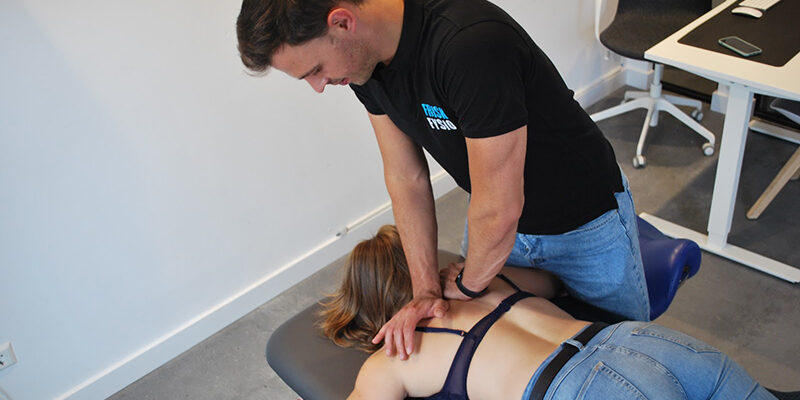When we think of hypermobility, we quickly think of someone who is incredibly limber. Yet it is possible that people who are hypermobile actually feel stiff and suffer from overworked tendons and muscles more quickly. In that case, we speak of hypermobility syndrome (HMS). In this blog, we will tell you more about hypermobility and HMS and tell you how you can test whether you are hypermobile yourself.
What is hypermobility?
Hypermobility means that you can move your joints more flexibly than the average person. However, this does not mean that, like a contortionist, you are ultra limber. The tendons, ligaments, intervertebral discs and cartilage are weaker and more elastic. The ligaments around the joints are longer than normal, with greater range of motion. Because your muscles now have to work harder to keep your joints stable, there is a danger that those muscles can become overloaded. So this gives a feeling of stiffness rather than flexibility.
What is HMS?
We speak of a hypermobility syndrome the moment you experience discomfort in your body due to excessively flexible muscle and joint ligaments, which is not caused by another connective tissue disorder. The flexibility of your joints and the composition of connective tissue is genetic. This is why hypermobility is often said to be hereditary.
Some symptoms of hypermobility are:
- Excessive joint mobility
- Increased risk of scoliosis
- Back pain
- Muscle pain
- Pain in the joints
- Dislocations/'dislocations'
- Fatigue
- Overstretched knees
- Sprained ankle
- Pelvic instability
Want to test if you are hypermobile yourself?
Then enter the Beighton Score out. Using a nine-point system, the degree of hypermobility is assessed. Do you achieve a score of 1? Then there is a low degree of hypermobility. Do you score 9 during the test? Then there is above-average hypermobility present.
- Place the palm relaxed and flat on the table and bend the little finger back at least 90 degrees, towards the back of the hand. Can you do the same for your other hand? You can score one point for each hand.
- Try bending your thumb forward against the underside of your forearm. You may use your wrist while doing this. Try this for both your left and right thumb. If you succeed, you score a point. Here it is again possible to score two points.
- Extend your arms and pay close attention to whether you can bend your elbows back more than 10 degrees. Can you do this for both arms? Then score a point for both left and right.
- Do you manage to bend your knees back more than 10 degrees? Then it is possible to score a point for both legs.
- Finally, test the hypermobility of your joints by bending forward with your knees extended and placing your hands flat on the floor. Keep your knees straight. Can you do this? Then score a point!
(Manual) physiotherapy for hypermobility
Unfortunately, there are no drugs that can cure hypermobility. Nevertheless, it is possible to reduce muscle and tendon complaints and better stabilise joints. In fact, muscles can take over some of the work of the ligaments. Therefore, it is important to build and maintain muscle condition. At the physiotherapist, you can undergo exercise therapy to train the strength of your muscles that will give the joints more stability. By exercising under supervision, the load capacity of the joints is carefully considered, thus preventing complaints.
Do you recognise yourself in the above complaints? If so, please contact us.
The moment you suffer from overworked muscles, joint pain or other symptoms due to hypermobility, you can contact contact us by calling 085-5000333 or sending an email to info@friskfysio.nl







